HASSIG - A Lost Calhoun Village Rediscovered, Stores, Saloons, Drillin'
CENTER>
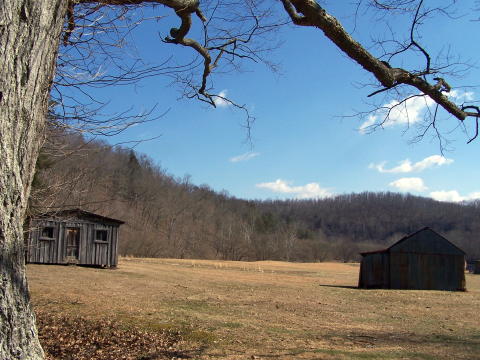
On this grassy field and nearby hills beside the West Fork once stood
the long-forgotten and short-lived Village of Hassig, upstream from
the better known Village of Richardson (Hur Herald Photo)
By Bob Weaver (1996)
Hassig was a Calhoun place forgotten, rarely remembered and little recorded.
So forgotten, it was not placed on a map and rarely mentioned in a newspaper. It was brought to life by the late Randall Whytsell.
The village sprung into existence about 1902 after oil and gas gushed from the C. R. Bee rig, about one mile above the better known Village of Richardson.
The driller, for which the place was named, is likely Jacob Hassig of Meredith and Hassig, a short lived company.
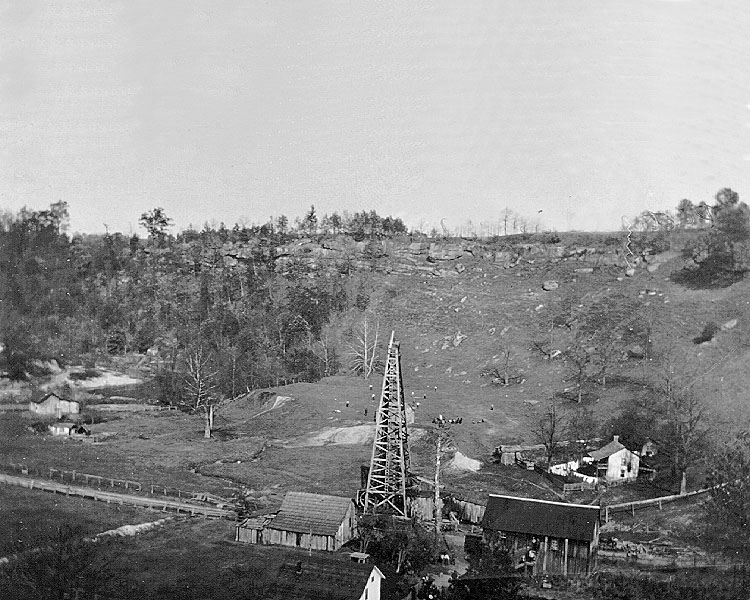
A partial view of Richardson about 1907,
note children playing ball in far field
The boom caused a frenzy with Carter Oil Company securing leases, drilling wells, and building transmission lines.
Located on the lower West Fork of the Little Kanawha River, both Hassig and Richardson have vanished as the 20th century ends.
Hundreds of men from Creston, Cremo, Hur, Rocksdale and from neighboring Roane County, came to the valley to do work. Several German immigrants located here, including the Kemmners and the Fritzs.
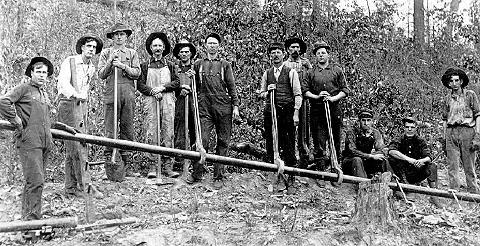
Richardson-Hassig oil field workers in 1903
(Photo courtesy of Randall
Whytsell)
Richardson was already a well established village of about 100 people when Hassig was born in it's shadow, one mile upstream.
Richardson had the well-known water mill and dam which ground grist and milled lumber, along with stores, a hotel, drug store, physicians office, barber shop, church and livery.
Randall Whytsell, local historian, and his wife, Blanche (both have passed away) have long resided at Hassig, later known as Hassig Yard.
Randall has memories of his father, Edwin Whytsell, telling stories about Hassig, when he began to plow up multitudes of old beer bottles from the Parkersburg Brewery 1902, which were discarded from the two saloons located in the large bottom he has used for a garden.
Randall remembered seeing some pictures of Hassig when he was a small child, the village had three general stores to supplement the saloons. Orville Grimm had a store near the river, while Daniel Haas had a store against the Calhoun hillside near Randall's house. Alex Ritchie had a store across the West Fork on the McDonald Farm on the Roane County side, he recalled.
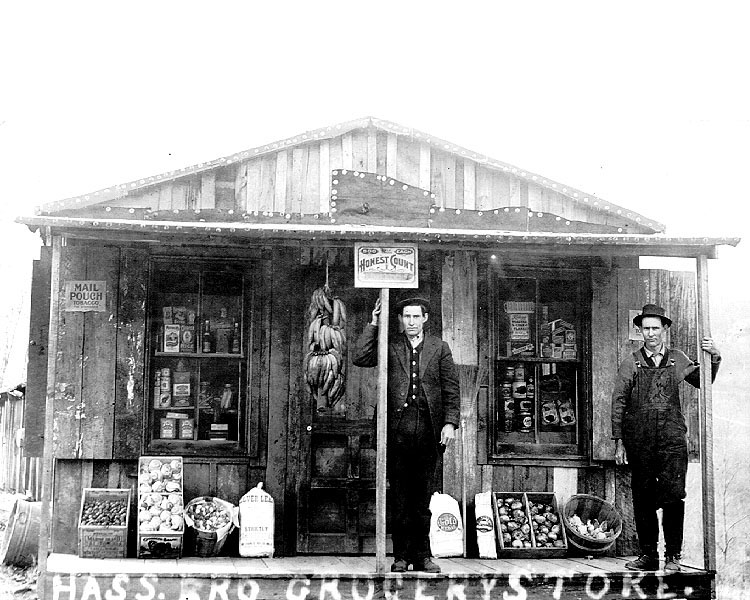
Hass Brother's Store at Hassig about 1910, with bananas
hanging on porch (Photo courtesy of Helen Rampp Morris)
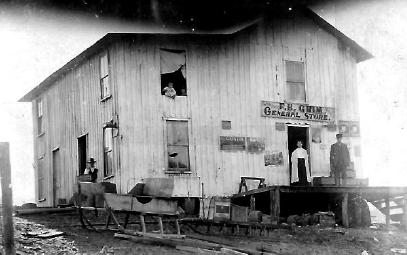
Huge F. B. Grimm General Store at Hassig very early 1900s
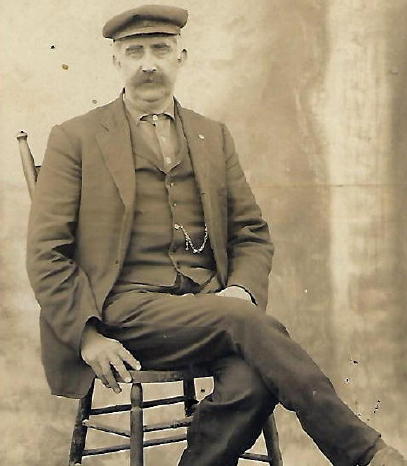
F. B. Grimm, owner of general store at Hassig, very early 1900s
There were six to eight houses in Hassig proper, surrounded by drilling rigs and field houses. Carter Oil sold their company to Hope Construction and Refining in 1926, who then sold out to South Penn (Pennzoil) in 1943.
The village itself was practically gone by 1920, although oil and gas buildings remained, including the company house into which Randall and Blanche moved in the 1940s, replaced by a new structure.
The Richardson Post Office was moved to the Hassig site, and Blanche was the postmistress until it closed in the early 1950's.
At one time a specially-built paddle boat was used to transport goods up and down the West Fork from the Creston harbor.
"It had spikes on the ends of the paddles so it could get over the sand bars," said Elva Duskey Wilson, granddaughter of Confederate Moccasin Ranger, Daniel Duskey. She reported it brought field supplies above the Richardson Dam to Hassig, including bananas, the boat apparently being "jacked" over the dam.
Occasionally, the boat was taken to Arnoldsburg during river floods.
Traveling down the fork, there are few clues to the long-gone village.
- Thanks to Peggy Whytsell Stemple, Randall Whytsell, and others who have helped revive the Village of Hassig.